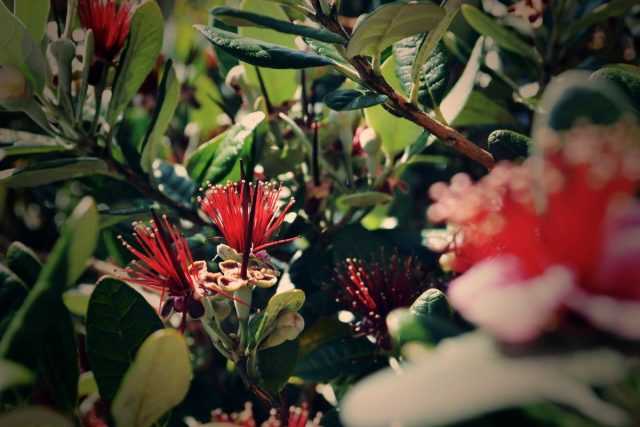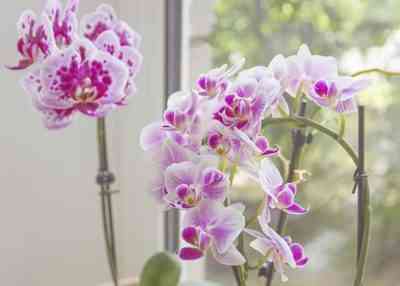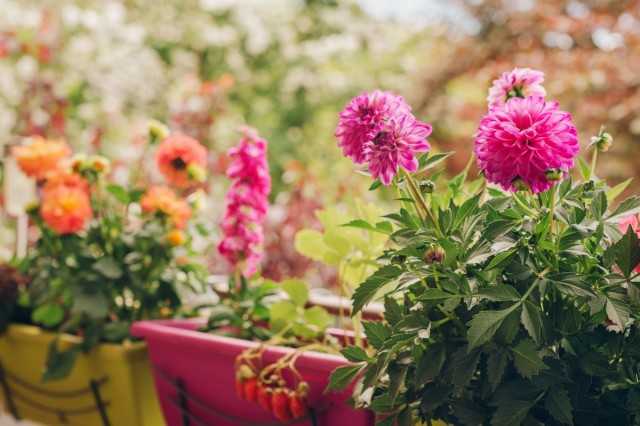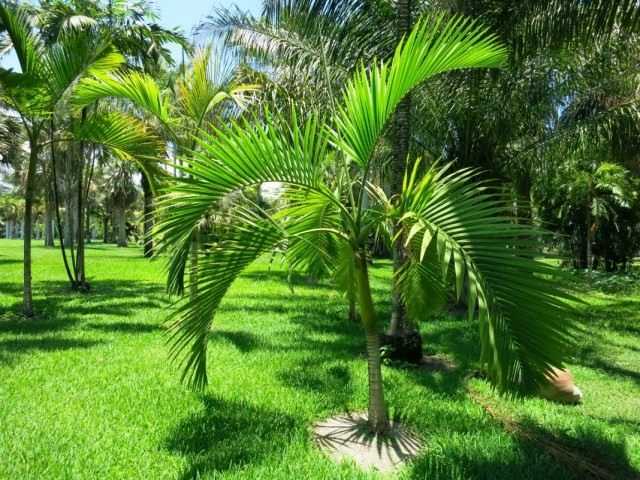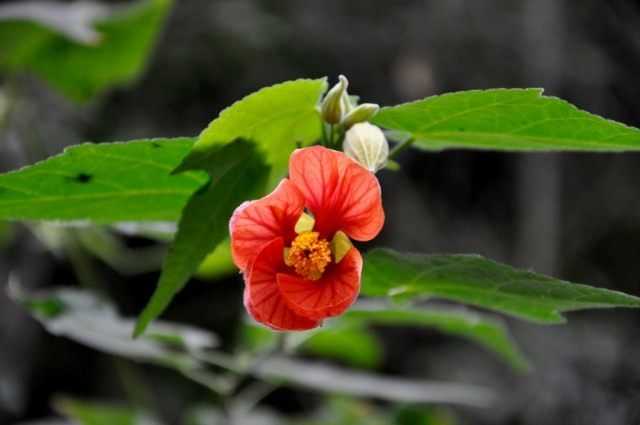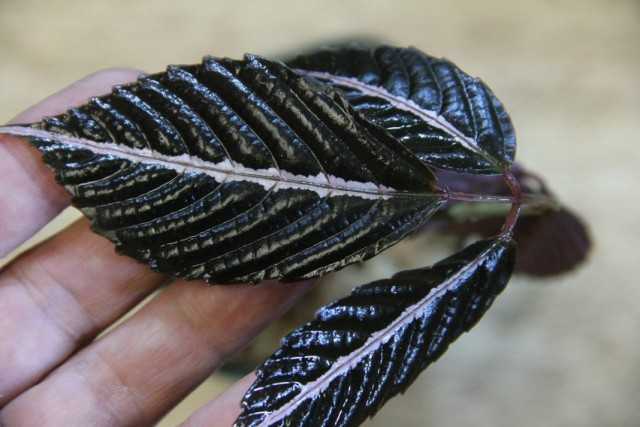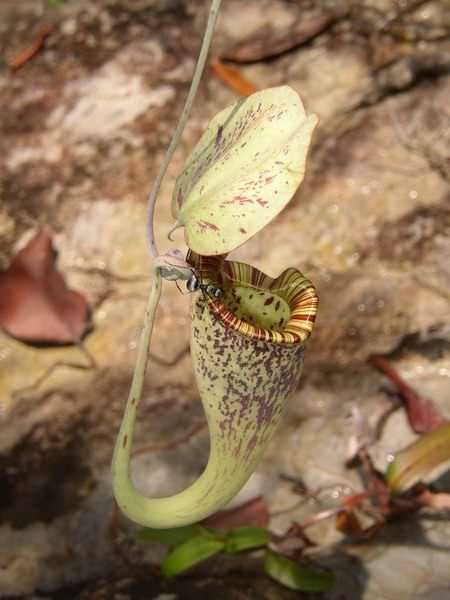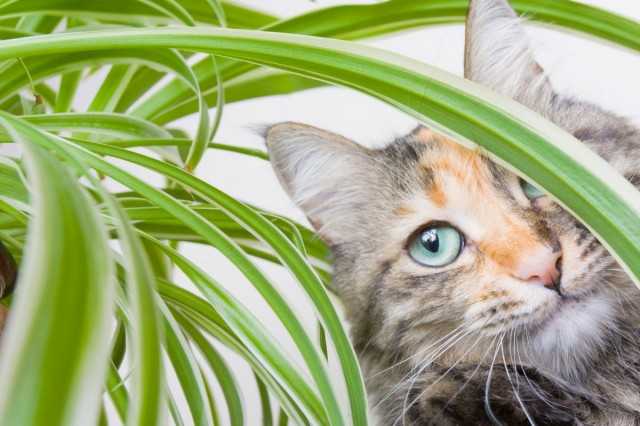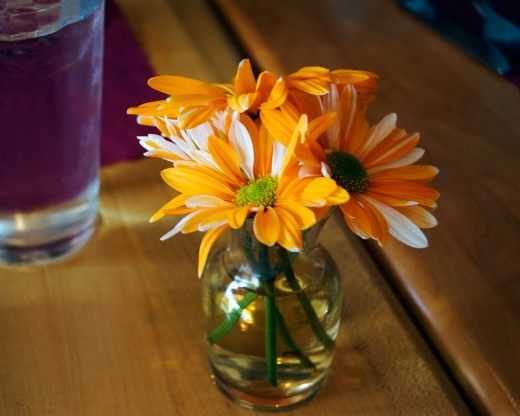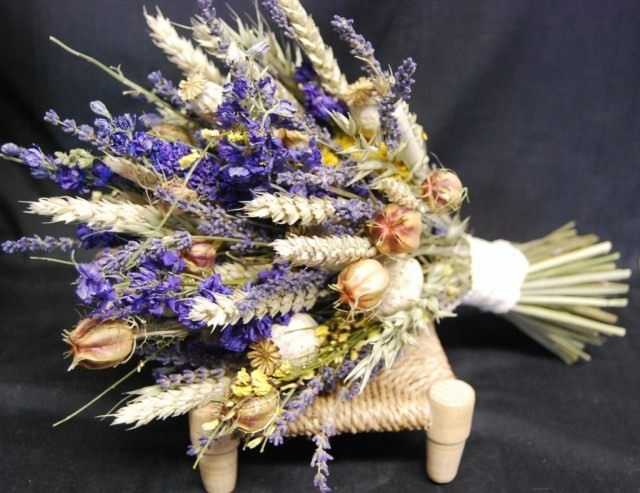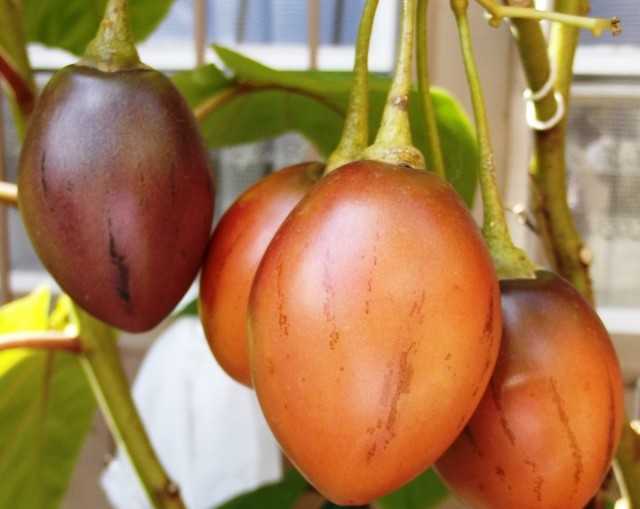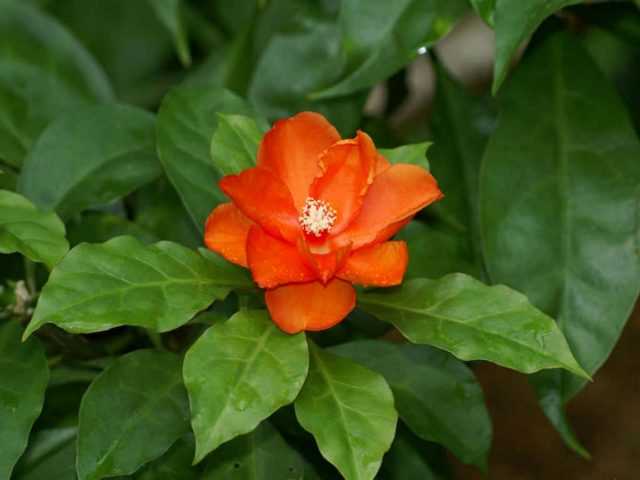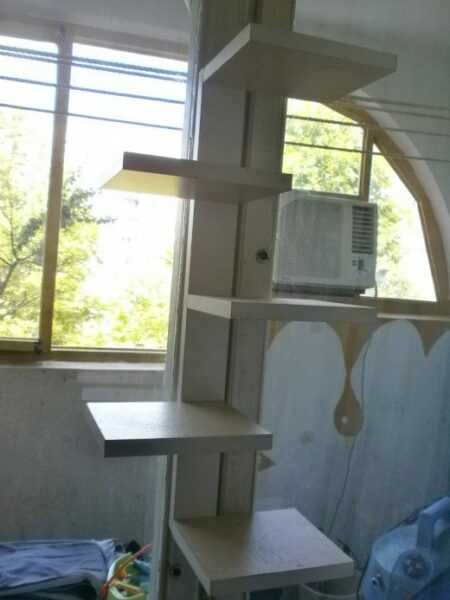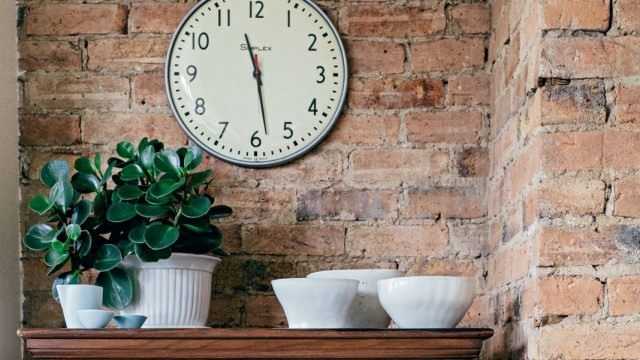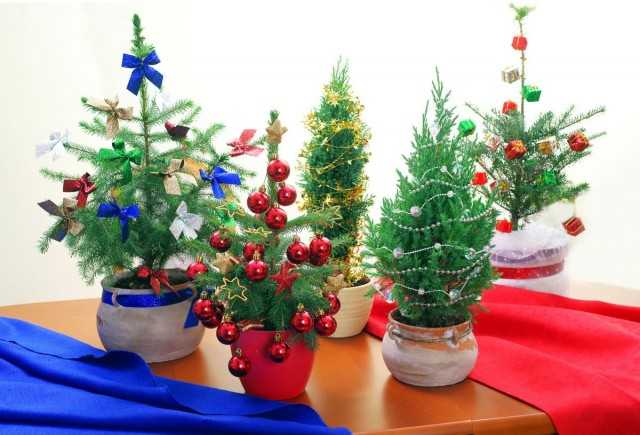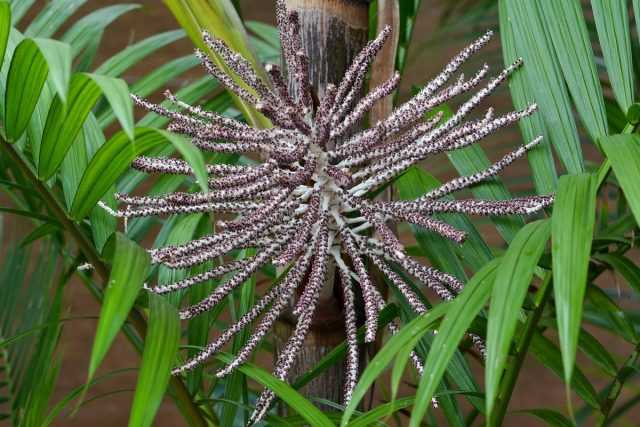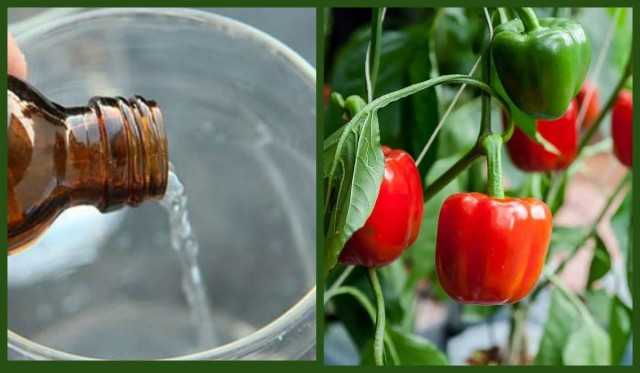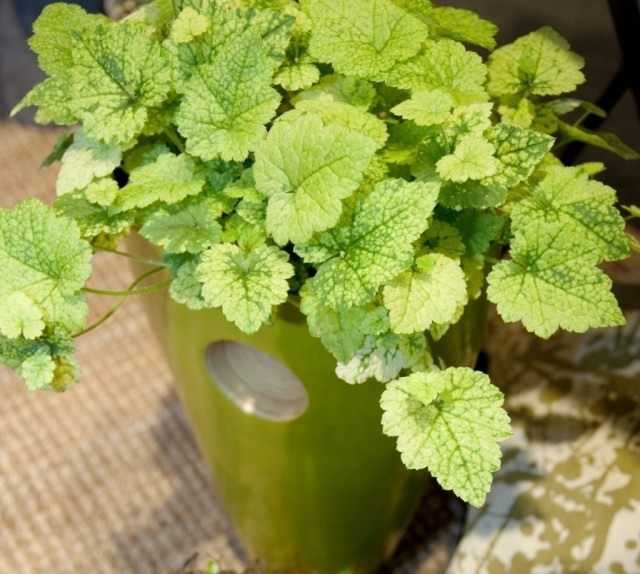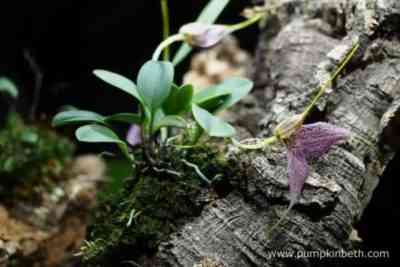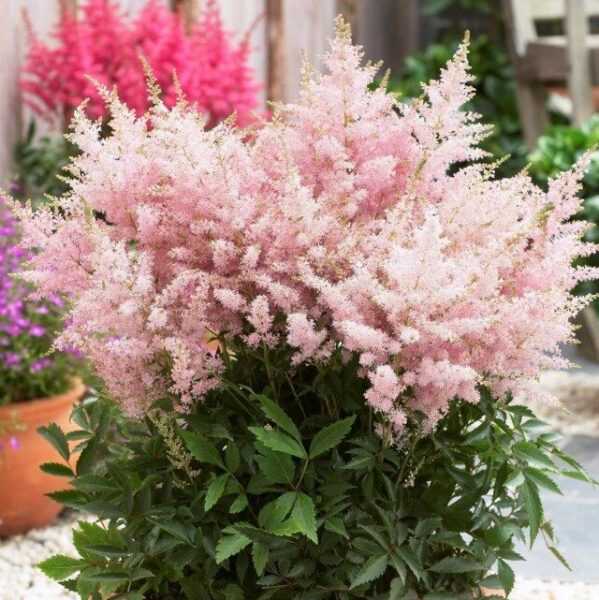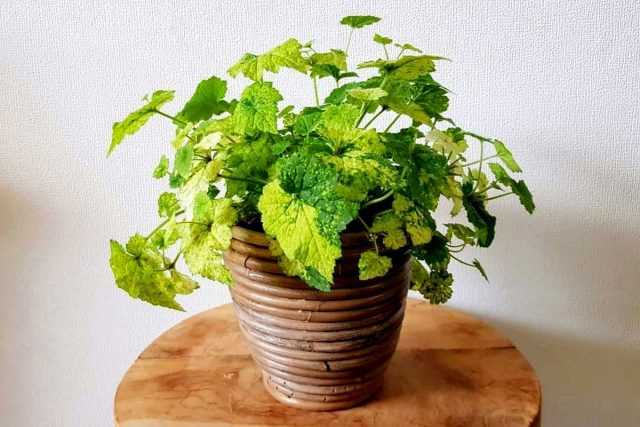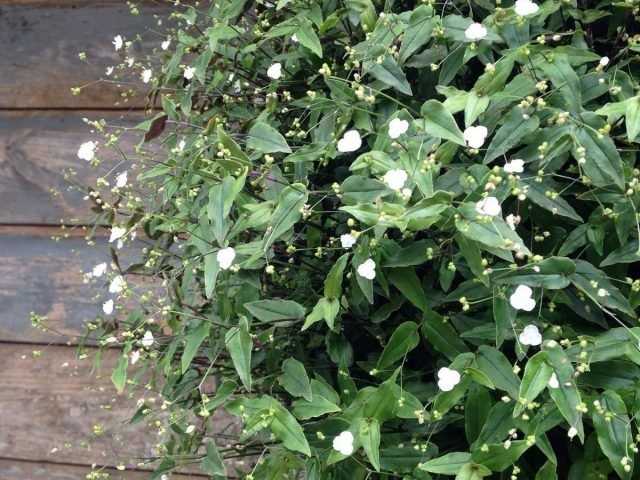The appearance of one of the most famous and widespread flowering cacti, Schlumberger, is well known to everyone. The legendary “Decembrist” conquers not only with its brightness, but also with an abundance of flowers, predictability of the timing of flowering, which even compensate for the often nondescript greenery. Despite its completely different character from cacti, this succulent plant does not go out of style. It is more suitable for experienced lovers of exotic than beginners, although the temptation is difficult to resist. After all, the chance to pamper yourself with a bright bloom just in time for the holidays attracts many.
Schlumberger is a good old Christmas or Decembrist. Farmer Burea-Uinsurance.com Alexey Yakovlev
Contents:
Schlumberger – flowering classics with nostalgic charm
Schlumberger (Schlumbergera) in different years was classified in different genera of cacti, staying longest in the company of zygocactus. But today, the species name of the plant has finally been decided. The Schlumbergers got their name in honor of the French collector and enthusiastic lover of botany. Botanical “Schlumberger” is inferior in popularity to cute and eloquent folk nicknames. “Rozhdestvennik”, “Christmas cactus”, “Decembrist”, “Varvarin’s color” – this is how true admirers of her beauty call Schlumberger.
Schlumberger belong to the Cactaceae family. In nature, they can be admired in the tropical forests of South America, where they are fixed not only on the trunks, but also on the roots of gigantic trees. Schlumberger plants are naturally winter-flowering plants, as their peak flowering occurs in the summer in the southern hemisphere, which corresponds to our winter. Blooming in December and February is natural for them.
Schlumberger are epiphytic cacti. Schlumberger height is limited to 15-50 cm, depending on containers, formation strategy or lack thereof. Shoots can be stretched and stronger, but only in a neglected state. Flat, segmented, tough, fleshy shoots with a fairly dark color flaunt a surprisingly beautiful relief, thanks to a coarsely jagged or scalloped edge.
They hang down, curving in arcs, sparsely, but beautifully share, recalling other ampelous cacti. Stem segments from 3 to 10 cm long look elegant. The dark, rich colors are accentuated by the glossy surface. The halos are located between the teeth and at the apices, most often they are pubescent.
The abundant flowering of Schlumberger is not accidentally compared to rhododendrons. At the peak of flowering, the plant is strewn with so many bright flowers that little attention is paid to the greenery. The flowers of the Schlumberger bloom at the ends of the shoots, developing amazingly quickly. They resemble stars in appearance and are in many ways typical of all cacti.
Multi-tiered and long-tubular, asymmetrical, Schlumberger flowers adorn not only with lanceolate, pointed perianth lobes, bizarrely curving back, but also with long “bundles” of graceful, hanging stamens. Schlumberger has “daytime” flowers that open during daylight hours.
Schlumberger’s color palette is associated with scarlet and hot pink. It is a brightly colored plant and often looks very attractive in winter interiors. But today this plant can be white-flowered, and lilac, and variegated-two-color, although the palette remains mainly within the framework of the white-red spectrum. The new hybrids have expanded the range of familiar pastel and bright colors with interesting fruity yellows.
The flowering period of Schlumberger traditionally coincides with the favorite Christmas holidays, starting in December and continuing for more than one week. Schlumberger releases flower after flower almost tirelessly. With proper care, you can admire the flowering until the end of January.
The timing of flowering can be changed, often Christmas trees bloom at a different time and by themselves, because the beginning of flowering directly depends not only on temperature, but also on lighting. Some varieties are bred with initially “specified”, excellent timing or longer, but not winter flowering. That is why Schlumberger advises to buy in flowering, so that you can appreciate the rhythms familiar to the plant.
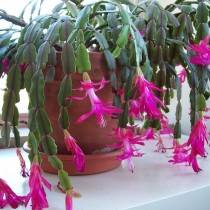

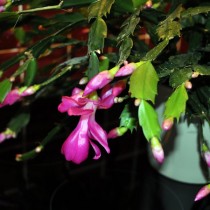
squirrelbasket
Types of indoor Schlumberger
Old, prone to loss of decorative shoots, not so densely branching and not so varied in color, Schlumberger of “Soviet times” have long been a thing of the past. They were supplanted by new hybrid varieties that made the common plant trendy and modern.
Of course, Schlumberger is still more often perceived as outdated, retroculture, but in interiors it does not at all look like a nostalgic relic. Species plants as indoor plants are less and less common today, or the type of plant is not indicated at all, replaced by the simple Latin name of the Schlumbergera plant and the name of the variety.
Some of the most decorative Schumberger species used in hybridization include:
Schlumberger Buckley (Schlumbergera х bucklei) – an epiphytic cactus with branched flat shoots of dark emerald tint color. With a maximum height of 50 cm, it is distinguished by cylindrical, fleshy stems, flat segments with slightly pronounced teeth and fluffy areoles. The flowers are large, up to 8 cm long with a very unusual yellowish tube. The varieties differ not only in shades of color – white, yellow, pink, purple, but even in the size and shape of the segments, allowing you to choose classic or more original plants to your liking.
Schlumberger Gartner (Schlumbergera gaertneri) Is a spectacular red-blooming species with less neat stems. The segments grow up to 8 cm, the bushes are not as dense as in other species. The orange-red flowers with a wider tube appear as flaming stars due to their highly elongated petals.
Schlumberger Russelian (Schlumbergera russelliana) – more modest in size, but not in appearance, with a maximum height of up to 30 cm.Flat, bright green, with warm shades of color, shoots can stretch up to 1 m in length.Scalloped edge makes flat segments very beautiful, like pubescent areoles from which drooping flowers develop. With a length of only 4 cm, the stem segments appear almost translucent due to the darker central vein. The flowers are large, showy, with a light green tube and a lot of petals. The colors of this Schlumberger species are limited to pink-red variations.
Schlumberger truncated (Schlumbergera truncata) Is a powerful succulent with drooping, jointed shoots, gaining strength with age and growing up to 50 cm in height. This type of Schlumberger looks very elegant due to the fact that the segments of the shoots rarely exceed 5 cm with half the width, they are as close to the leaves in their shape as possible. Pronounced teeth alternate with areoles, accentuated by thin bristles, which are also repeated at the tops of the shoots. Flat shoots bend in arcs and are painted in a rich bright green, on young branches a swampy tone. Flowers emphasize the neatness of the structure. Up to 5 cm in diameter, they are more symmetrical than those of other Schlumberger, with a very long, curved tube and a wide-open rim. Cultivars of this species offer a choice between white-pink-red-lilac shades.
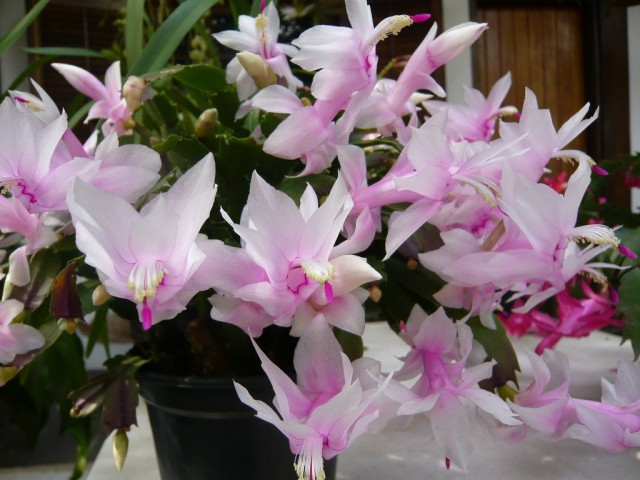
Growing conditions Schlumberger
Schlumberger, despite the status of a golden classic, has never been a plant “for everyone”. It is only worth deciding to grow a Decembrist for flower growers with some experience in growing tropical species, and even then on condition that it is possible to provide the coolness necessary for wintering. But the strict requirements for the dormant period are compensated for by the ability to choose differently illuminated places, and by a wide range of temperatures for the period of active growth.
The dormant period for Schlumberger in traditional flowering periods lasts from September to the end of November. The plant will not be able to bloom without cool conditions during the dormant period.
Lighting and placement
Despite its status as a beautifully flowering plant, Schlumberger is not as light-requiring as most of its competitors. It develops best in diffused lighting, and if careful care is provided, it can even settle in partial shade. Of course, the plant will not bloom in strong shading. But it is not at all necessary for a Schlumberger to place it only on the windowsill.
The plant does not like the direct sun, the rays leave burns on the shoots and lead to a rapid loss of decorativeness. The seasonal reduction in lighting in winter, coinciding with the flowering period, is desirable to compensate by moving to lighter places. Schlumbergers prefer to bloom on the brightest windowsill in the house – the southern one.
Schlumberger can be grown as a pot or ampel plant, using drooping shoots to create beautiful cascades. But it should always be placed below the point of view, so that the look at the cactus bushes falls from top to bottom. Schlumbergers are good at group plantings, cactus and tropical plant collections.
Temperature control and ventilation
Despite belonging to tropical cacti, Schumbergera is not at all as thermophilic as it seems. There is no need for her to strictly select the temperature, because the plant is able to cope with both heat and coolness. During the period of active growth, she is quite comfortable at any temperature from 18 to 30 degrees.
During the dormant period, the Schlumberger should enjoy a comfortable coolness. Compliance with temperature regimes plays a key role in stimulating flowering. For Schlumberger, the air temperature should remain within the range of 10 to 15 degrees. In the cool, Schlumberger is kept for 2 to 3 months, then returned to the heat to start the process of active growth. If the plant is grown with the usual December flowering, then it is worth bringing the Schlumberger back into the heat in early December.
Schlumberger can be taken out in the garden or on the balconies in summer. The plant loves fresh air, but is afraid of too bright lighting, and in the garden for the cactus, you need to choose semi-shady or shady locations.
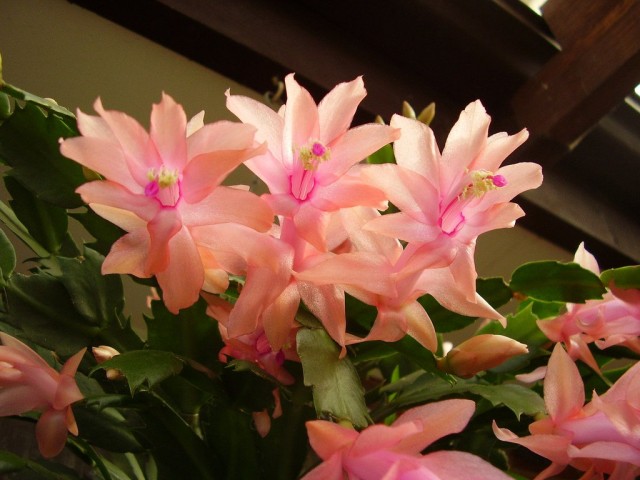
Home care for a Schlumberger
Compared to other cacti, Schlumberger is hardly a simple plant. It is necessary to adjust the irrigation in accordance with its stage of development, to ensure constant monitoring for traces of emerging problems and not to forget about the formation. The love of high humidity also does not make it easy to grow this crop.
Watering and air humidity
Unlike most cacti, Schlumberger is quite hygrophilous. She loves abundant watering during the period of active growth, requires more frequent watering and tolerates drying out of the soil and improper watering much worse than ordinary succulents. But at the same time it remains a true succulent for its fear of getting wet and damp.
Watering Schlumberger should be carried out carefully, in small portions of water, evenly saturating the soil and immediately draining excess water from the pallets, in no case soaking the shoots. Before starting the next watering, make sure that the top of the substrate is dry.
For the dormant period, watering is reduced to a minimum, starting from September, gradually reducing these procedures, the high humidity of the substrate at this time is critically dangerous. Abundant watering is resumed with the appearance of buds. After flowering, Schlumberger, regardless of whether or not a transplant is carried out, the plant is kept in slightly lower humidity for a month or one and a half, allowing the soil to dry out more, and then resume the usual abundant watering. The soil in the containers should be left practically dry.
For Schlumberger, water quality will also have to be monitored. It should be soft, distant, a couple of degrees warmer than the soil during the period of active development.
The air humidity for this succulent must be high. Dry air negatively affects the state of greenery. The usual method of increasing humidity for this plant is spraying, but they can only be carried out outside the budding and flowering period, therefore, during the heating system operation season for Schlumberger, air humidity must be maintained by installing special devices or pallets with wet moss, expanded clay, stones.
Top dressing and composition of fertilizers
For Schlumberger, feeding can only be carried out outside the dormant period. Since September, fertilization is interrupted, resuming only when the cactus begins to grow again. Too generous feeding will not benefit the plant: fertilizers are applied either at a dosage reduced by half, or twice less often than for ordinary indoor plants.
For Schlumberger, you need to use special fertilizers for succulents and cacti. They do not tolerate a high nitrogen content, they need an increased dose of potassium.
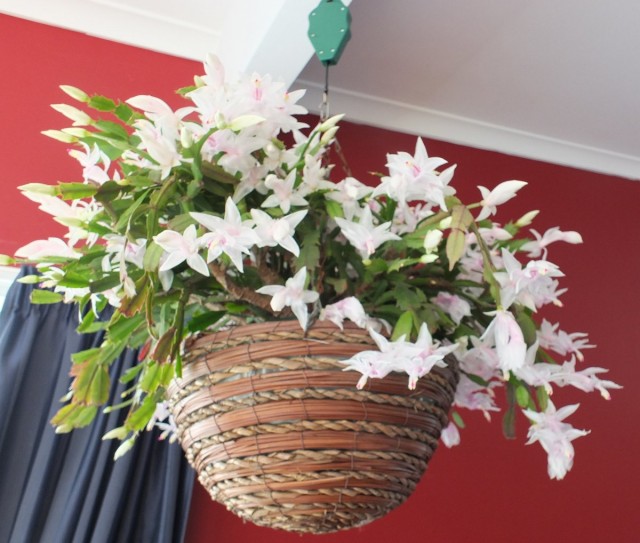
Pruning and shaping Schlumberger
Without special measures to thicken, Schlumberger will never turn into lush, elegant bushes. Usually, this plant is prone not only to elongation, but also to the loss of the ability to release side shoots as the number of segments increases.
For Schlumberger, very simple shaping measures are needed – plucking or breaking off the outermost segments to stimulate the growth of new branches. Cutting off the segments is not worth it, but a simple rotary motion with the flat segment clamped in your hand is the best option. Crash points are not processed.
The shaping procedure on Schlumberger is best done immediately after flowering.
Over time, the lower part of the shoots lignifies, but with regular formation, the plant retains its decorative effect for decades.
Transplant Schlumberger, containers and substrate
Schlumberger is transplanted only when she has mastered the previous container. For large and adults Schlumberger, you can limit yourself to a transplant every five years. It is better to transplant shortly after the end of flowering, before the rapid growth of greenery, in extreme cases – in early or mid-spring, during March or April.
When choosing containers for the cultivation of Schlumberger, it is better to stop at the classic pots for epiphytes with a minimum height, in extreme cases, not exceeding the diameter. The brighter the container, the better the plant looks.
Unlike many other brethren, Schlumberger cannot grow in poor and too light soil. This plant needs quality soil with good nutritional values. You can use special soil for epiphytes or substrates for succulents. The pH readings should remain within the 5,5-6,5 range.
If the soil is mixed independently, then it is better to stop at a simple soil mixture of sand, leafy and soddy soil in a ratio of 1: 2: 1 or a mixture of sand and leafy soil. Even in the purchased substrate, it is better to add charcoal as a preventive measure.
When transplanting a plant, it is worth handling as carefully as possible both with numerous shoots and with the roots of the plant, trying to avoid contacts and carefully rolling over the cactus.
Diseases, pests and problems in the cultivation of Schlumberger
Of the diseases, Schlumberger is threatened with fusarium and rot, and even then with improper care. With a slight injury, the correction of care will have time to stop the process, but with a serious one, you need to cut out the damaged parts and an emergency transplant with fungicide treatment.
Schlumberger pests threaten if kept in dry air. The beautifully flowering cactus is very fond of scale insects and felt insects, which are best dealt with immediately with insecticidal preparations.
Common problems in growing a Schlumberger:
- growth arrest when the substrate dries up in summer or when overflowing during a dormant period;
- dropping of buds when water gets in and sudden changes in temperature;
- lethargy or wrinkling with improper watering;
- redness of the shoots in too bright light;
- lack of flowering with an uneven dormant period.

Breeding Schlumberger
Schlumberger was never included in the lists of elite, expensive plants – primarily because it is very easy to propagate. A plant at home can be obtained from simple cuttings.
Schlumberger stem cuttings do not take root too quickly, but there is nothing difficult in the process of growing new plants. The best time for propagation by cuttings is similar to the formation period – immediately after flowering. But for rooting, not separate segments are used, but the apical fragments of the stem with 2-3 segments.
The place of breaking off is treated with charcoal and dried. Schlumberger cuttings are rooted in light soil or a simple sandy-peat substrate, under a hood with or without regular ventilation, with frequent light watering. Plants develop quickly enough.
Grafting is a cost-effective method of producing and preserving luxurious varietal plants for those with a large collection of cacti. As a stock, not other schlumbergers are used, but prickly pears or prickly prickly, if desired, to obtain a standard or tree-like shape. Inoculation is carried out in the summer, on bare, split at the top of the stems, grafting shoots with 2-3 segments.
The fusion is carried out without a cap, at a moderate temperature of about 20 degrees. As it grows, any leaves and shoots are removed from the stock.
